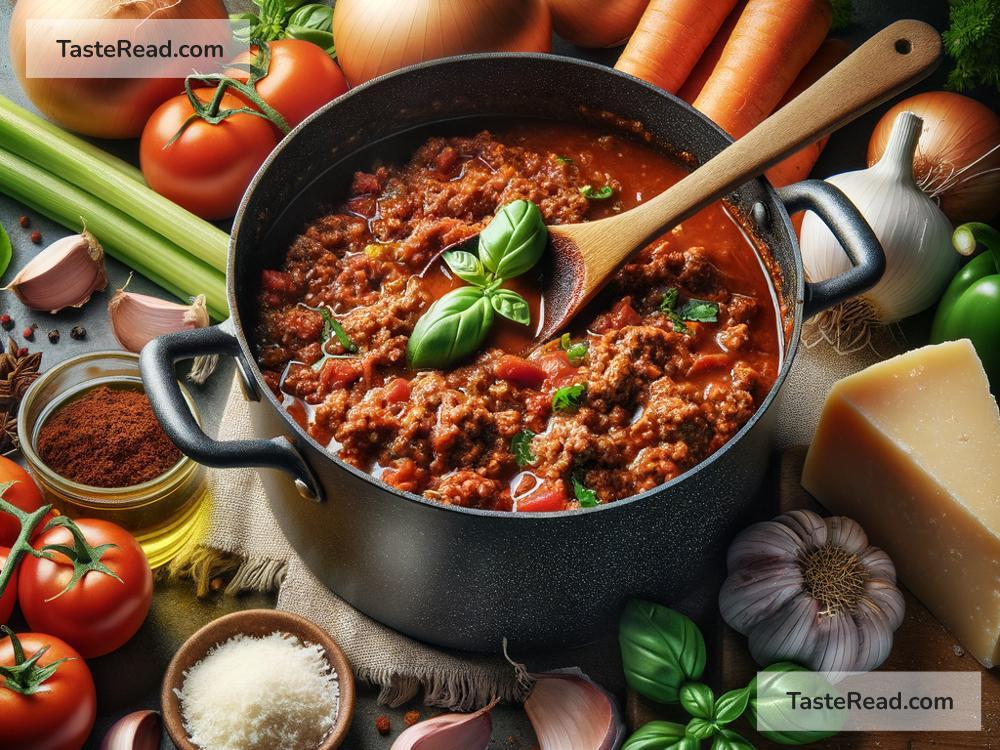Mastering Homemade Bolognese Sauce: An Italian Classic
There’s something magical about homemade food. It warms your heart, fills your kitchen with inviting smells, and makes every meal time special. Among the many dishes of Italian cuisine, few are as comforting and timeless as Bolognese sauce. This hearty, meat-filled sauce is the secret behind many irresistibly delicious pasta dishes. Mastering this Italian classic at home takes a bit of patience, but it’s simpler than you may think—and the result is worth every minute.
In this blog, we’ll guide you step by step through making authentic Bolognese sauce. Whether you’re new to cooking or a seasoned chef, you’ll be able to turn simple ingredients into a rich and satisfying masterpiece.
What Is Bolognese Sauce?
Bolognese sauce, or “ragù alla bolognese,” is a traditional Italian meat sauce originating from Bologna, a city in northern Italy. It’s thick, flavorful, and slow-cooked, combining ground meat, vegetables, tomato paste, and broth. Unlike a typical marinara or tomato-based sauce, Bolognese uses less tomato and relies heavily on meat, making it robust and savory.
This sauce is often paired with tagliatelle or spaghetti, though it’s also fantastic in lasagna. The key to authentic Bolognese is patience—allowing the ingredients to simmer and blend so the flavors can fully develop.
Ingredients You’ll Need
Before you start, gather the following ingredients. Most of them are simple and easy to find at your local grocery store:
- 2 tablespoons of olive oil or butter
- 1 medium onion, finely chopped
- 1 medium carrot, finely chopped
- 1 celery stalk, finely chopped
- 2–3 garlic cloves, minced
- 500g (about 1 pound) ground beef (you can mix it with ground pork for added flavor)
- 1 cup whole milk or cream
- 1 cup dry white wine (optional but highly recommended)
- 2 tablespoons tomato paste or 1 cup canned crushed tomatoes
- 2 cups beef or chicken broth
- Salt and pepper to taste
- A pinch of nutmeg (optional)
You’ll also need pasta for serving, and a sprinkle of freshly grated Parmesan cheese if you want to make it extra special.
Step-by-Step Recipe
Follow these steps to create your very own homemade Bolognese sauce:
1. Prepare the Vegetables
Start by chopping your veggies—onion, carrot, and celery—into small pieces. These three ingredients are the foundation of your Bolognese sauce. Together, they create something called “soffritto,” which adds depth and sweetness to the flavor.
Heat the olive oil or butter in a large pan over medium heat, and sauté the chopped vegetables until soft and fragrant, about 5–7 minutes. Add minced garlic at the end and cook for another minute or two.
2. Cook the Meat
Add the ground beef (and pork, if you’re using it) to the same pan. Break it up with a spoon or spatula so it cooks evenly. Stir the meat until it turns brown, and make sure there are no pink bits left.
At this stage, you can season the meat lightly with salt and pepper, but hold off on adding too much—it’s better to adjust the seasoning later once the sauce is finished.
3. Add Milk and Simmer
Did you know that milk is a classic ingredient in traditional Bolognese sauce? It helps tenderize the meat and adds a touch of richness. Pour the milk into the pan and let it simmer gently, stirring occasionally, until most of the liquid evaporates.
4. Add Wine for Extra Flavor
If you’re using white wine, pour it in and let it simmer as well. The wine enhances the dish with a slight tangy note, but don’t worry—the alcohol cooks off, leaving only the flavor behind.
5. Mix in Tomato Paste or Tomatoes
Next, stir in the tomato paste or canned tomatoes. Tomato paste makes the sauce richer, while crushed tomatoes add more moisture. Choose based on your preference, or use a combination of both.
6. Pour in Broth and Simmer Slowly
Add the broth to the pan, then reduce the heat to a gentle simmer. This is the most important step of the recipe! Slow cooking allows the flavors to deepen and blend together beautifully. Let the sauce simmer uncovered for a minimum of 1.5 hours, stirring occasionally.
If the sauce starts to look too dry, you can add more broth or even a splash of water.
7. Season to Perfection
Taste your sauce toward the end of cooking. Adjust the salt and pepper as needed, and if you like, add a pinch of nutmeg for a subtle hint of extra warmth.
8. Serve with Pasta
While your sauce finishes simmering, cook your pasta according to the instructions on the package. Tagliatelle, fettuccine, or spaghetti all work well, but you can use whatever you have on hand.
Once the pasta is cooked, toss it in your sauce, making sure everything is evenly coated. Garnish with freshly grated Parmesan cheese and a sprinkle of chopped parsley, if desired.
Tips for Perfect Bolognese
- Use fresh ingredients: Fresh vegetables and quality meat make all the difference in flavor.
- Don’t rush: Slow cooking is essential for a rich, flavorful sauce.
- Experiment: Feel free to tweak the recipe to match your taste. Some people add pancetta for extra depth, while others include a bay leaf or oregano.
Conclusion
Making Bolognese sauce at home is a labor of love, but it’s not complicated. With a handful of simple ingredients and some time, you can create a comforting dish that’s sure to impress your family and friends.
So, roll up your sleeves and give it a try! The joy of cooking Italian classics like this is in the process—and, of course, the delicious results. Buon appetito!

